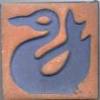
Mon, May-14-18, 16:41
|
 |
Senior Member
Posts: 2,036
|
|
Plan: Atkins-ish (hypoglycemia)
Stats: 000/000/000

BF:
Progress: 50%
|
|

Quote:
|
Originally Posted by M Levac
Agree with first part, disagree with second part. A "better understanding" doesn't come from using a vague unit of measure like a teaspoon, but by using a standard unit of measure like the gram. This also applies to "% of daily requirement", which also appears right next to the Xg number for added sugars on the nutritional label, as if somehow added sugars was a nutrient and had a daily requirement, which is absurd, if we accept the first part of that suggestion above.
|
The problem with using grams as the primary unit of measure is that in a country which uses imperial measurements for most things, it's actually quite vague to the general public. Do they even know what a gram is? Can they visualize it, or is it just some mysterious unit of measure that they have no idea what it looks like? What does a gram of sugar look like anyway? Other than scientists (who deal with metric measurements) those living in an imperial measurement country wouldn't be likely to be able to describe what the volume of one gram of sugar looks like.
But a teaspoon isn't quite as vague sounding to someone who lives in a country which uses imperial measurements. Granted, when they think of teaspoons, they're probably thinking about how many heaping spoonfuls of sugar they scooped from the sugar bowl into their coffee, instead of a measuring teaspoon (which is much smaller - probably closer to what fits in a demi-tasse spoon, instead of a sugar shell spoon), but at least speaking of sugar content in terms of teaspoons gives thos who have no idea what a gram of sugar looks like, some concept of just how much sugar there really is in that candy bar they managed to scarf down in 3 minutes.


|